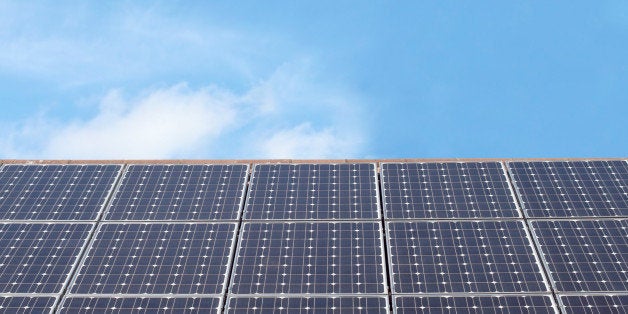
Solar energy access in the United States varies wildly from state to state. Texas gets enough sunlight per year to power the entire world via solar energy, and yet has one of the lowest solar capacities in the country. The Northeast is the "second most solar-friendly region in the country" despite receiving the least sunshine.
At the heart of it is state-level regulatory policy. Florida's is described as 'hostile', while New York State has embraced renewables. As solar energy prices tumble, do state regulations risk creating a two-tier access to cheap renewable energy?
The new renewable
In the past renewable energy has been easy to dismiss on an economic basis. As a new technology, it has necessarily been more expensive than older, more established fossil fuels. It requires new infrastructure -- which, in the wake of the 2008 financial crash, spending on was always going to take a backseat -- and primitive technology is inefficient.
However, that's now not the case. The U.S. may have a relatively low up-take of renewable energy for a developed nation proportionally, but those that receive clean energy benefit from enormous cost savings. Buying solar can now be as cheap as fossil fuel energy; and as oil, coal and gas reserves become more difficult to exploit, it won't be long before it's significantly cheaper.
This is particularly the case when using your own solar panels. Once installed, some users are taken entirely off-grid. Some even create a net surplus of energy which can be sold back to the grid -- the "feed-in tariff" model Germany's embrace of solar is built on.
Why would any state, particularly a sunny state, be so against investment in something that delivers cheaper, more sustainable energy to its citizens, and creates jobs in the process?
Demand destruction
There are, of course, complex local issues -- such as the environmental report issue blocking wind farms in Oregon -- but broadly speaking the main obstacle is demand destruction.
Simply put, if homeowners start installing solar panels -- especially in sunny states -- they no longer need to buy electricity. The large, powerful, rich and influential energy lobby can only watch as the bottom falls out of the fossil fuel market.
To change tack now and embrace renewables would require enormous investment and the kind of business agility that companies the size of, say, Exxon-Mobil simply don't possess.
And in a country so beholden to lobbyists with deep pockets, local regulators don't stand much chance in pushing a green agenda regardless. Even the president has trouble pushing through clean energy friendly policy.
The world's main energy source
Of course there's nothing to stop private suppliers exploiting the newly relative cheapness of renewables -- as the growing market in solar leasing demonstrates -- but as a recent IEA report argues, any significant shift towards renewable energy requires significant government support. After all, what we're talking about is a mass-scale re-tooling of the backbone of the whole economy. It stands to reason that would need some level of central planning and the kind of infrastructure spending only government can deliver.
In particular, the growth of solar energy has currently rested on the installation of photovoltaic panels on residential properties. But the report states that once overall energy market share of solar hits around 15 percent (it's currently at about 1 percent) the efficiency savings will fall and the technology will need to shift to concentrated solar plants -- where solar power is used for thermal energy -- which requires large-scale investment.
The report is bullish in its prediction that solar could be the largest source of world energy by 2050, but only if government policy is consistent and coherent. Which is the opposite of now -- where solar installations are subject to a federal 30 percent tax credit, but can, as in Florida, end up being subject to extra state taxes.
Solar from the back
Still, the IEA's opinion is undoubtedly colored by the lessons from Europe so far, that have depended on massive state involvement. That's not to say we can't benefit from that and take a different route.
The fall in solar energy prices is down largely to technological developments made off the back of European investment. Now that technology is accessible the market may be able to take over without the same level of direct state support.
That's certainly the hope behind the recent $53 million federal grant for research into solar technology, with the express goal of making it cheaper -- indirectly forcing the hand of the market.
Another project to watch is the World Wildlife Fund collaboration with large companies -- so far, Cisco Systems, 3M, Kimberly-Clark and National Geographic -- to offer residential solar panel installations as an employee benefit, reportedly met with extremely high levels of interest.
The up-shot is this: uneven state regulation does present a short-term risk that a two-tier renewable energy market may exist. But eventually, aided by indirect measures like these, market forces will take over, pushing energy giants into embracing green energy -- or to face extinction.
